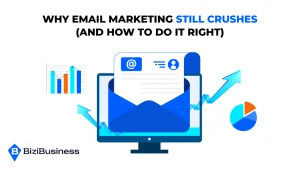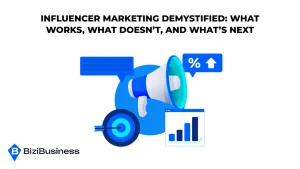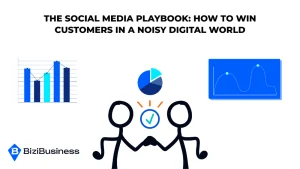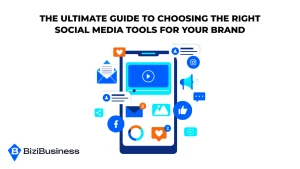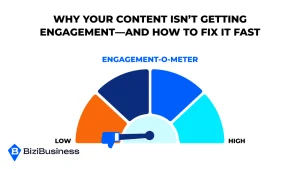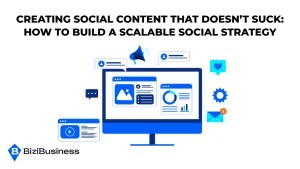BiziTopics
The Death of Traditional Ads: What’s Actually Working in eCommerce
BiziBusiness
Jul 8, 2025
19 min read
The game has changed.
If you’re still running the same ad campaigns that worked two years ago, you’re already behind. Traditional eCommerce ads—static banners, broad targeting, and generic product pushes—are no longer moving the needle.
In 2025, attention is fleeting, costs are soaring, and your audience is savvier than ever. They scroll past the noise, skip the fluff, and only engage with what actually resonates.
So… what’s working now?
This guide cuts through the clutter. We’re diving into the new era of eCommerce advertising—the strategies that are driving results for brands who are scaling fast while others fade into irrelevance.
If you’re ready to stop wasting ad spend and start driving serious growth, keep reading.
Why Traditional Ads Are Dying
Let’s be blunt: the old playbook is toast.
You know the one—banner ads slapped across every sidebar, repetitive carousel campaigns on Facebook, or retargeting loops that just won’t quit. Once upon a time, those tactics brought in clicks. Now? They bring in eye rolls.
Here’s why traditional eCommerce ads are collapsing under their own weight:
1. Banner Blindness Is Real
People have trained their brains to ignore anything that looks like an ad. Pop-ups, flashy display banners, and overly polished product photos all get filtered out subconsciously. You’re paying for visibility—but no one’s really seeing you.
2. Ad Fatigue Happens Fast
Running the same creative for weeks kills performance. In 2025, attention spans are shorter and scroll speeds are faster. If your ads aren’t fresh, relevant, and scroll-stopping, they’re toast by day three.
3. Costs Are Skyrocketing
The competition is insane. CPMs and CPCs are at historic highs, especially on platforms like Meta and Google. If your ads aren’t razor-sharp, your budget evaporates before you even see a return.
4. Lazy Targeting Gets You Ghosted
Thanks to privacy updates (hi, iOS14), old targeting methods are less effective. Broad audiences and interest-based ads don’t cut it anymore. If you’re not leveraging first-party data and behavior-based targeting, you’re shooting in the dark.
5. Consumer Trust Is Lower Than Ever
People are skeptical. Ads that feel pushy, overproduced, or salesy just don’t land. Your audience wants authenticity, value, and relevance—not a hard sell or a generic pitch.
Bottom line? What used to work… doesn’t.
But don’t panic—this shift is actually an opportunity. Because while others keep pouring money into broken systems, you can pivot into ad strategies built for how people buy today.
The Rise of Performance-Focused, Intent-Based Advertising
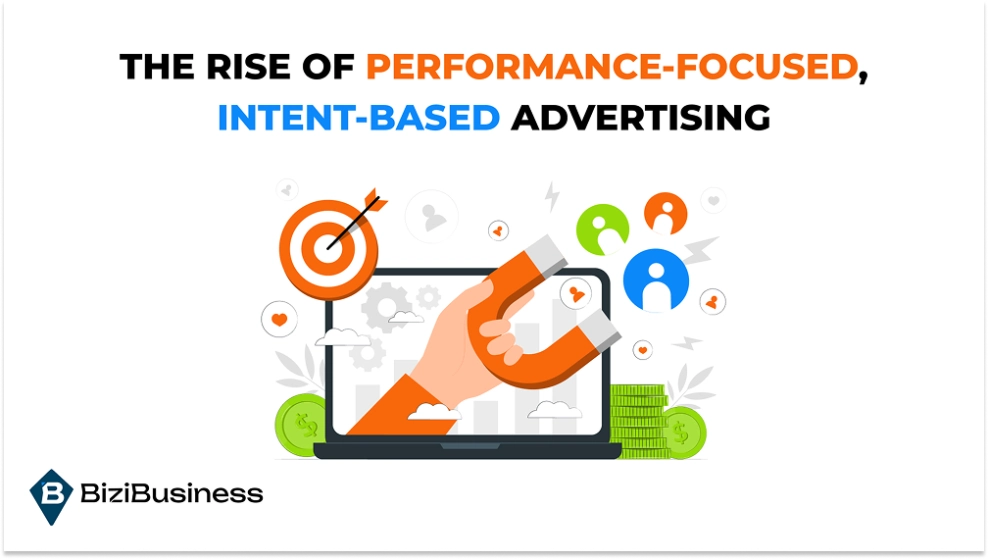
If traditional ads are fading, what’s replacing them?
Simple: ads rooted in intent, powered by performance data, and optimized in real time.
High-growth eCommerce brands aren’t just blasting out content anymore. They’re crafting laser-focused campaigns that align with buyer intent at every stage of the funnel—and constantly improving them based on what the data says.
Here’s how they’re doing it:
1. Intent Beats Impressions
Forget vanity metrics. The goal isn’t more reach—it’s better reach. Targeting people based on what they’re actively searching, viewing, or engaging with is a game-changer. It’s the difference between yelling into the void and whispering in someone’s ear right when they’re ready to buy.
Platforms like Google (with high-intent keywords), Amazon, and even Pinterest thrive on this principle.
2. First-Party Data = The New Goldmine
With third-party cookies fading into oblivion, smart brands are doubling down on the data they own—email lists, site behavior, purchase history.
This data powers smarter lookalike audiences, dynamic product ads, and personalized retargeting that actually works. The result? Lower ad costs, higher relevance, and way better ROAS.
3. Real-Time Optimization With AI
Modern ad platforms don’t sleep—and neither should your campaigns.
Using AI tools and built-in automation (like Google’s Performance Max or Meta’s Advantage+), eCommerce brands are running smarter split tests, adjusting budgets automatically, and fine-tuning creative in real time. No more “set it and forget it.”
And for brands with bigger stacks, predictive analytics tools are helping forecast buyer behavior and time campaigns for maximum impact.
4. Full-Funnel Focus
Performance advertising today isn’t just about the sale. It’s about guiding the buyer journey—from awareness to consideration to conversion—with tailored messaging and creative at each step.
Top-funnel? Educational video, or UGC. Mid-funnel? Retargeted testimonials. Bottom-funnel? Urgent offer, killer landing page, easy checkout.
It’s strategic, seamless, and seriously effective.
So while everyone else is still stuck trying to “go viral,” performance-focused eComm brands are building sustainable machines that scale profitably.
Creative That Converts: Ad Messaging That Actually Works
Your audience doesn’t see your ads—they feel them.
In 2025, the brands that win aren’t the ones with the flashiest visuals or the biggest budgets. They’re the ones telling stories, sparking emotion, and making people feel understood.
Your ad creative is no longer a “nice to have.” It’s the make or break factor.
Here’s how high-converting eCommerce ads are crafted today:
1. Emotion Over Promotion
Product shots and discount codes won’t cut it. What moves people to click—and buy—is emotional resonance.
Think:
- Relatable problems
- Aspirational outcomes
- Lifestyle visuals that show the transformation, not just the product
The formula: Hook their heart, then win their head.
2. Native > Obvious
The best ads don’t feel like ads. On TikTok, IG Reels, or Facebook Stories, native-style content blends in with organic posts. That’s what gets views and engagement.
UGC (User-Generated Content) is killing it right now:
- Unboxing videos
- “Before and after” demos
- Real people using your product in real life
It builds trust and smashes the ad wall.
3. Hook, Problem, Solution, Proof
The classic funnel still works—but in milliseconds.
You have 1–3 seconds to grab attention. Here’s the structure top performers use:
- Hook: Stop the scroll (bold statement, visual, question)
- Problem: Call out the pain point
- Solution: Introduce your product as the fix
- Proof: Show social proof, results, or urgency to convert
Simple, repeatable, powerful.
4. Creative Testing Is a Must
Even great creatives get tired fast. That’s why top eComm brands treat content like a science lab.
They test:
- Hooks
- Thumbnails
- Formats (video vs static)
- CTA copy
- Voiceover style
And they let data decide the winner, not gut feeling.
Platforms That Deliver in 2025

Not all platforms are created equal—and in 2025, knowing where to run your ads is just as critical as knowing how.
Here’s what’s hot, what’s fading, and where smart eCommerce brands are doubling down:
1. Meta (Facebook & Instagram): Still a Powerhouse—If You Play It Right
Meta’s ad network is still massive, with deep targeting and powerful retargeting options. But rising ad costs and iOS privacy updates have made lazy campaigns obsolete.
What’s working now:
- Reels and Story ads with UGC
- Dynamic product ads using first-party data
- Broad targeting paired with creative testing (let the algorithm optimize)
Meta isn’t dead—it just demands smarter execution.
2. TikTok: The Creative Goldmine
TikTok isn’t just for Gen Z—it’s a massive conversion engine when used right. It’s not about flashy visuals; it’s about storytelling, authenticity, and speed.
What’s working now:
- Organic-style video ads
- Creator partnerships for native content
- Trend jacking with a product tie-in
TikTok is less polished, more emotional—and when done right, incredibly powerful.
3. Google Ads: Intent is King
Google is still the platform for high-intent shoppers. Especially for search, shopping, and now with AI-powered Performance Max campaigns, it’s a conversion machine when dialed in.
What’s working now:
- Branded and competitor keyword campaigns
- Performance Max with well-segmented assets
- Google Shopping for DTC products
Bonus: use Google Ads to test what keywords to target in your SEO strategy.
4. Amazon + Retail Media Networks: The Hidden Gem
If you’re selling on Amazon or through big retailers, retail media is booming. More eyeballs, more purchase-ready users, and growing ad platforms.
What’s working now:
- Sponsored product ads
- Video ads within product listings
- Targeting competitor listings with product placement
This is high-intent territory—perfect for eComm brands ready to scale.
5. Pinterest, YouTube & Beyond
- Pinterest is making a comeback with product pins and shopping-focused users.
- YouTube Shorts is quickly becoming a powerful mid-funnel channel.
- Snapchat and Reddit? Niche, but still valuable for the right brand and audience.
Bottom line: Don’t just throw ads everywhere. Choose platforms based on your product, audience behavior, and intent level.
Attribution Is Everything
You can’t scale what you can’t track.
One of the biggest reasons eCommerce ad budgets get wasted? Poor attribution. If you don’t know what’s actually driving conversions, you’re making decisions in the dark—and probably scaling the wrong things.
In 2025, getting attribution right is non-negotiable.
1. Last-Click Is Lying to You
Most brands still rely on last-click attribution… but here’s the truth:
➡️ That final click didn’t create the buyer—it just closed the deal.
People might discover you on TikTok, research on Google, get retargeted on Instagram, and finally convert from an email or branded search.
If you only credit the last step, you’ll kill the top-of-funnel campaigns that actually brought them in.
2. Multi-Touch Attribution Wins
High-performing eComm brands are moving to multi-touch models—tools that show the full journey.
These platforms help:
- Triple Whale
- Northbeam
- Google Analytics 4 (GA4)
- Wicked Reports (for more advanced setups)
They help answer:
- Which creatives bring in high-intent users?
- Which platforms generate the best LTV?
- What does the journey from ad to checkout really look like?
3. First-Party Tracking Is Crucial
With third-party cookies crumbling, brands need to lean on first-party data—email tracking, on-site behavior, and post-purchase surveys—to understand the customer path.
Post-purchase question ideas:
“How did you first hear about us?”
“What made you decide to buy today?”
Simple. Powerful. Insightful.
4. What Metrics Actually Matter
Skip the vanity metrics—here’s what real marketers track:
- ROAS by campaign stage (not just overall)
- Blended CAC (across organic + paid)
- LTV:CAC ratio (long-term profitability)
- Click-to-conversion delay (how long it really takes)
It’s not just about what’s profitable today. It’s about what keeps growing next quarter too.
Bottom line: If you’re not investing in attribution, you’re scaling blind.
Now, let’s talk synergy.
How Organic SEO and Paid Ads Work Better Together
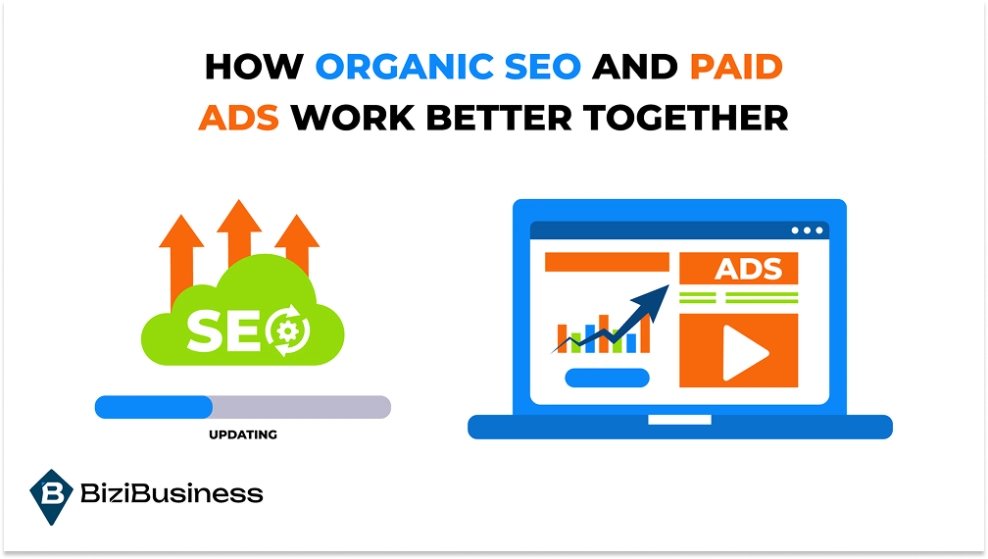
In the marketing world, SEO and paid ads are often treated like two separate beasts. But in reality? When you blend them strategically, they amplify each other—and your results—massively.
It’s not a question of “paid or organic.” The winners in 2025 are doing both, in sync.
Here’s how the most successful eCommerce brands are leveraging SEO and ads together for unstoppable growth:
1. Use Paid Ads to Test SEO Keyword Strategy
Paid search gives you instant feedback on keyword performance.
Running Google Ads for high-intent keywords allows you to:
- See which search terms actually convert (not just generate traffic)
- Identify which terms bring high-LTV customers
- Learn which ad copy resonates most—then recycle that for SEO titles, meta descriptions, and landing page copy
Pro tip: If a keyword has high CPC but high conversion? That’s a prime target for SEO—because ranking for it organically will save you serious money over time.
2. Retarget SEO Visitors With Paid Ads
Not everyone who finds you via Google will buy on the first visit. But they’ve shown intent—and they’re warm.
Retarget them across platforms with:
- Product ads that match their original search
- Social proof or testimonial-driven creatives
- Offers to bring them back and close the sale
This increases your ROAS and boosts conversion rates from organic traffic.
3. Blend Search Intent Across Both Channels
When you align the messaging of your SEO content and your paid ads, you meet users with a consistent narrative—which builds trust and moves them down the funnel faster.
Let’s say someone searches:
- “Best cruelty-free skincare brands”
- They find your blog post via SEO, explore a bit, and leave.
Later, they see a Facebook retargeting ad that says:
“Finally—A Cruelty-Free Skincare Line That Actually Works (Rated #1 for Sensitive Skin)”
Boom. Relevance, continuity, and conversion potential.
4. Build Topical Authority With Both Organic + Paid
If you want to own a category or niche, consistency across channels is key.
Example:
- SEO helps you show up for long-tail, informational queries: “How to style wide-leg jeans,” “Best jeans for petite women,” etc.
- Paid ads help you dominate for short-tail, commercial terms: “Buy wide-leg jeans,” “High-waisted jeans under $100”
Together, they flood the SERP and social feeds with your brand. The result? You become unavoidable.
5. Share Data Between Channels for Smarter Optimization
Running both SEO and paid allows you to cross-pollinate insights:
- SEO pages with high dwell time → Use that content in paid landing pages
- Ad creatives with top CTRs → Turn those angles into blog intros or H1s
- SEO titles with high organic CTR → Test them as ad headlines
One team’s win becomes everyone’s gain.
6. Paid Can Give SEO a Visibility Boost
It’s no secret—CTR is a ranking signal.
If you drive targeted traffic to an SEO blog via paid social, and people:
- Click
- Stay
- Engage
Google notices. And that post may rise in organic rankings, especially for lower-competition or fresh content.
This tactic—often called “traffic priming”—helps newer sites get their SEO content noticed faster.
7. Maximize the Full Funnel
SEO often plays strongest at the top and middle of the funnel, while paid ads shine at the middle and bottom.
Here’s how they work together:
| Funnel Stage | Channel | Example Tactic |
|---|---|---|
| Awareness | SEO | Blog post answering a common question |
| Consideration | SEO + Paid | Retargeting ad offering buyer’s guide download |
| Conversion | Paid | Google Shopping ad with product + offer |
| Retention | SEO | Post-purchase guides, how-to content |
| Re-engagement | Paid | Email list retargeting with dynamic ads |
Blending both gives you visibility everywhere your customer goes.
SEO builds trust and longevity. Paid ads drive speed and precision. Together, they create a full-funnel growth engine that compounds over time.
Stop treating them like silos—integrate them, and watch the results multiply.
Common Mistakes That Still Kill Ad Performance
Even with solid creative, intent-based targeting, and the right platforms, your ads can still flop—and often for reasons that seem small but have massive impact.
Here are the most common (and costly) mistakes eCommerce brands keep making in 2025, and how to dodge them:
1. Treating Ads Like a Silver Bullet
Too many brands expect ads to do everything—drive traffic, convert cold leads instantly, and scale overnight.
But ads are only one piece of the puzzle. If your product, pricing, or offer isn’t compelling, no ad strategy will save you.
Fix first:
- Product-market fit
- Offer clarity
- Conversion-ready site experience
Then layer on the ads.
2. Bad Landing Page Experience
This is where so many brands burn money.
You might nail the ad, crush the creative, and get the click—but if your landing page is slow, cluttered, or confusing, users bounce.
Common landing page killers:
- Slow load time (3+ seconds = big drop-off)
- Weak headline or unclear value prop
- No social proof or trust elements
- Clunky mobile experience
Pro tip: Run ads to a specific offer, not your homepage. Make the journey seamless.
3. Scaling Too Early
It’s tempting to increase ad spend after a few wins, but if you scale too fast without dialing in your creative, targeting, and offer—you’ll lose momentum and money.
Avoid this trap:
- Test → Optimize → Scale
- Never scale until your ROAS is consistent across multiple days and audiences
Start small. Scale smart.
4. Not Testing Creatives Continuously
Creative fatigue is real—and deadly.
Most eCommerce brands run the same ad variations for weeks, wondering why performance drops. In reality, audiences burn out quickly, especially with high ad frequency.
Always be testing:
- New hooks
- New formats (video, carousel, UGC, etc.)
- Different offers or angles
- Updated visuals or voiceovers
The best brands treat creative like inventory—always rotating.
5. Ignoring Post-Purchase Opportunities
Most brands stop after the sale. But smart brands know the real profit is in increasing customer lifetime value.
Big missed opportunities:
- No post-purchase upsell or bundle offer
- No email flow to drive repeat buys
- No retargeting to encourage reviews or referrals
Ads are expensive. Maximize every buyer journey by nurturing after the first sale.
6. Chasing Trends Over Strategy
It’s easy to get distracted by shiny new platforms or ad gimmicks. But without a solid foundation, trends become expensive detours.
Stick to this framework:
- Who’s your audience?
- What problem are you solving?
- Where do they spend time?
- How can you deliver value before asking for the sale?
Let the trend serve the strategy—not replace it.
7. No Cohesive Funnel Strategy
Too often, brands run disconnected campaigns:
- A random product ad here…
- A general awareness video there…
But without a mapped journey from awareness → trust → decision → purchase, you’re leaking money at every stage.
Your ad strategy should be a funnel, not a patchwork.
Each ad, each landing page, each email—they should work together.
Avoid these mistakes, and your ads will stop being a cost—and start becoming a serious growth engine.
What High-Performance Brands Are Doing Differently

The difference between mediocre eCommerce brands and market leaders isn’t just budget—it’s strategy, systems, and speed.
High-performance brands don’t rely on luck or one viral ad. They build scalable machines that turn cold traffic into loyal buyers—over and over again.
Here’s exactly what they’re doing differently:
1. They Prioritize Data Over Opinions
Top brands aren’t guessing. Every decision—from creative to campaign scaling—is driven by data.
They track:
- CTR, CVR, AOV, ROAS by funnel stage
- Time-to-purchase and customer journey length
- Creative fatigue metrics (like frequency and decay curves)
They use tools like:
- Triple Whale
- Northbeam
- GA4
- Heatmaps (Hotjar, Lucky Orange)
- Post-purchase surveys
They know what works, why it works, and when to pivot.
2. They Nail Creative Velocity
Great creatives don’t happen once—they happen weekly.
Winning brands build repeatable systems to test 5–10 creatives per week:
- Hook variations
- Offer stacks
- UGC vs polished studio shots
- New formats (like TikTok-style edits or AI-generated product demos)
They treat creative testing like product R&D—fast, strategic, and continuous.
3. They Own Their Audience
While most brands are trapped by rising ad costs, high-performers are growing owned channels in parallel.
That includes:
- Email lists (with high open/click engagement)
- SMS flows for repeat buys and flash sales
- Loyalty programs with direct re-engagement
They use paid ads to build assets—not just sales.
So while others are renting attention, these brands own it.
4. They Create Full-Funnel Ad Systems
Rather than “one ad to rule them all,” high-performing brands build multi-stage ad sequences:
- Top-of-Funnel (TOF): Education, entertainment, brand story, problem-awareness
- Middle-of-Funnel (MOF): Product-focused content, social proof, comparisons
- Bottom-of-Funnel (BOF): Strong CTAs, limited-time offers, abandoned cart retargeting
Each stage has its own creative, its own goal, and its own KPIs.
It’s advertising that mirrors the buying journey.
5. They Move Fast (But Stay Strategic)
Markets shift. Algorithms change. Ad costs spike.
Winners adapt—fast—without sacrificing fundamentals.
They test fast, kill underperformers quickly, and double down on what works today. But they’re also investing in long-term plays (like SEO and brand equity) to stay ahead tomorrow.
They’ve built teams (or partners) that move with agility and precision.
6. They Focus on LTV, Not Just ROAS
The best brands understand this truth:
“The first purchase is just the beginning.”
They look beyond one-off conversion metrics and focus on customer lifetime value:
- Post-purchase upsells
- Cross-sells based on past behavior
- Subscription models
- Win-back flows after 60–90 days
Why? Because even if a first purchase has a break-even ROAS, the next 3 sales make it wildly profitable.
7. They Invest in Brand + Performance
Performance ads sell today. Brand sells forever.
The best brands strike a balance:
- UGC and product demos for short-term wins
- Story-driven creatives that build emotional connection
- Clear brand voice across every ad, email, and landing page
They don’t just sell products—they create movements, missions, and loyalty.
High-performance eComm brands don’t rely on hacks. They build systems. They move with intent. And they treat every part of the funnel like it matters—because it does.
If you’re serious about growth, don’t just copy tactics. Adopt the mindset.
Final Word: The Future of eCommerce Ads
The landscape has changed. The playbook has evolved. And the brands clinging to yesterday’s ad tactics are quietly falling behind.
If there’s one truth in 2025, it’s this:
There are no shortcuts—but there is a smarter way.
What’s Coming Next
Here’s what’s shaping the next wave of eCommerce advertising—and what you need to be ready for:
✅ AI-Curated Creative at Scale
From scriptwriting to video editing, AI tools are speeding up content production. But smart brands still lead with strategy—AI just helps execute it faster.
✅ Privacy-First Targeting
As third-party data disappears, the power shifts to brands who own their audience. Email, SMS, quizzes, loyalty programs—these are the new targeting goldmines.
✅ Content-Led Commerce
Ads won’t feel like ads. They’ll feel like value. The line between content and commerce is blurring—and winning brands are blending storytelling with selling.
✅ Platform Diversification
Brands relying on one channel are the most vulnerable. The future belongs to those who diversify: Meta + TikTok + Google + Email + SEO, all working together.
Where to Invest Now for Long-Term Wins
If you’re looking to future-proof your growth, start here:
- Creative systems that generate and test new content weekly
- First-party data collection (email, SMS, purchase behavior)
- SEO strategy that aligns with your ad campaigns
- Attribution tools to track the full journey—not just last click
- Customer experience that turns buyers into repeat customers
Ads alone won’t scale your business. But the right ads, paired with strategy, systems, and customer obsession? That’s your edge.
This isn’t about doing more marketing. It’s about doing the right kind of marketing.
If you’re tired of wasting ad spend and want to build a profitable engine for scale—you now have the roadmap.
Now go pull the levers that actually move the needle.
Subscribe to Newsletter
Unlock your creativity and stay up to date on marketing tips
